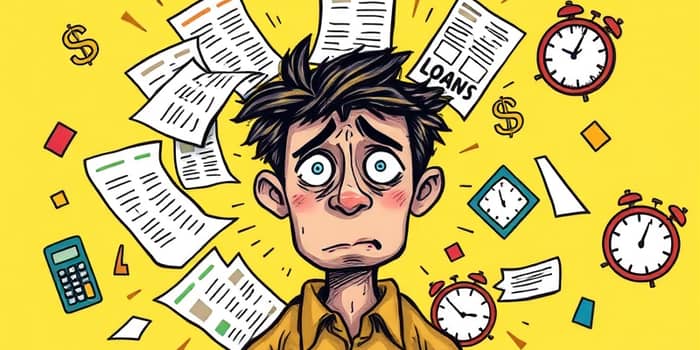
Loan stacking may appear as a quick fix, but it often masks deepening financial trouble. Recognizing it early can help borrowers and lenders navigate risk before it spirals out of control.
Loan stacking happens when a borrower takes out multiple loans from different lenders in a brief window, frequently without full disclosure. This practice exploits the rapid approval processes of certain fintech platforms and aggressive brokers. Although not illegal per se, nearly all lending agreements contain clauses that ban it.
At its core, loan stacking is a symptom of financial strain—an emergency remedy that too often becomes a gateway to deeper instability.
Borrowers commonly turn to stacking under acute pressure. Whether individuals or small businesses, they face urgent expenses and limited options.
In some instances, stacking is not driven by need but by sheer intent to defraud. Fraudsters exploit weak checks to secure funds they never plan to repay.
Loan stacking is more than a convenience; it is a red flag for escalating risk. Lenders and regulators view it as an early indicator of potential default or insolvency.
Managing several debt instruments simultaneously also increases the chance of errors. A missed deadline on one loan can cascade, worsening the borrower’s position.
Lenders face increased losses when stacked loans default simultaneously. This risk multiplies under economic downturns, contributing to higher non-performing loan (NPL) ratios and tighter credit markets.
Weak detection of loan stacking can lead to under-provisioning and unexpected write-offs. Across the banking sector, inadequate credit risk oversight has historically fueled broader financial crises.
Systemically, widespread stacking resembles other risk transmission channels like excessive short-term borrowing. Without proper controls, it can strain liquidity and undermine confidence in the financial system.
Both lenders and borrowers can adopt measures to address stacking before it escalates.
Robust governance frameworks empower institutions to identify stacking behavior and intervene promptly, reducing the chance of severe losses.
Regulators have emphasized the need for banks to upgrade their risk assessment models. Supervisory guidance now recommends frequent risk reassessments, timely moving of exposures to higher risk stages, and regular monitoring of trigger events like recent loan approvals.
Industry groups are collaborating on best practices for data sharing. By pooling insights, lenders can spot borrowers who are rapidly accumulating credit lines elsewhere.
History shows that neglecting early warning signs magnifies financial distress. During previous downturns, lapses in risk management—such as ignoring small but persistent signs of borrower strain—led to surges in NPLs and required massive capital injections.
Strong risk cultures and transparent reporting are central to preventing repeat scenarios. Institutions that responded swiftly to borrower distress managed to contain losses and maintain stable credit flows.
Loan stacking is a powerful signal of risk escalation. By recognizing it as more than isolated behavior, stakeholders can protect both borrowers and the financial system.
Early detection and proactive measures—from transparent borrower communication to enhanced risk monitoring—are crucial. With collaboration between lenders, regulators, and borrowers, loan stacking can be managed effectively, turning a red flag into an opportunity for constructive intervention.
References













